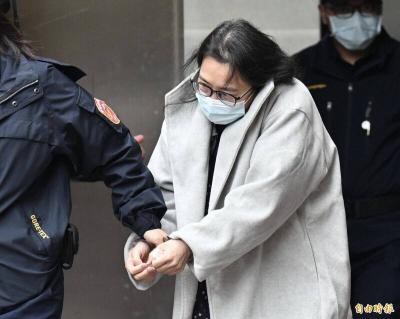The Democratic Progressive Party (DPP) yesterday expressed concerns over the situation in Tibet amid an intensifying crackdown by Chinese authorities and called on President Ma Ying-jeou (馬英九) to voice his concerns to Beijing.
DPP Chairperson Tsai Ing-wen (蔡英文) said she was “heartbroken” about increasing reports of self-immolation protests by Tibetans in her meeting with Dawa Tsering, director of the Tibet Religious Foundation of H.H. The Dalai Lama, yesterday, said Hsiao Bi-khim (蕭美琴), deputy executive director of the party’s New Frontier Foundation think tank.
Tsai reiterated the DPP’s support for the region’s democratic movement and the well-being of Tibetans in Taiwan, Hsiao said.
Tsering handed Tsai a letter from the Dalai Lama, who expressed his recognition and praise of Tsai’s efforts in Taiwan’s democratic development and in the presidential election last month, she said.
According to Hsiao, the Tibetan spiritual leader also explained the current situation and operation of the Tibetan government-in-exile in the letter, saying that he had withdrawn himself from the political decisionmaking process of and had decided to concentrate on religious affairs.
The DPP released a three-point statement on the latest developments in Tibet after the meeting.
The Ma administration should condemn China’s crackdown on Tibetan activists and actively pay attention to the human rights problems in Tibet, as well as the development of the democratic movement in China, rather than staying mum on the issue, the DPP said.
The party expressed gratitude for the Dalai Lama’s interest in Taiwan’s democracy and his care for Taiwanese who suffer from natural disasters.
Human rights and democracy have always been the DPP’s core values, the party added, and those values should and would be included in Taipei’s engagement with Beijing.

The Ministry of Education (MOE) is to launch a new program to encourage international students to stay in Taiwan and explore job opportunities here after graduation, Deputy Minister of Education Yeh Ping-cheng (葉丙成) said on Friday. The government would provide full scholarships for international students to further their studies for two years in Taiwan, so those who want to pursue a master’s degree can consider applying for the program, he said. The fields included are science, technology, engineering, mathematics, semiconductors and finance, Yeh added. The program, called “Intense 2+2,” would also assist international students who completed the two years of further studies in

Former president Tsai Ing-wen (蔡英文) departed for Europe on Friday night, with planned stops in Lithuania and Denmark. Tsai arrived at Taiwan Taoyuan International Airport on Friday night, but did not speak to reporters before departing. Tsai wrote on social media later that the purpose of the trip was to reaffirm the commitment of Taiwanese to working with democratic allies to promote regional security and stability, upholding freedom and democracy, and defending their homeland. She also expressed hope that through joint efforts, Taiwan and Europe would continue to be partners building up economic resilience on the global stage. The former president was to first

Former president Tsai Ing-wen (蔡英文) on Monday called for greater cooperation between Taiwan, Lithuania and the EU to counter threats to information security, including attacks on undersea cables and other critical infrastructure. In a speech at Vilnius University in the Lithuanian capital, Tsai highlighted recent incidents in which vital undersea cables — essential for cross-border data transmission — were severed in the Taiwan Strait and the Baltic Sea over the past year. Taiwanese authorities suspect Chinese sabotage in the incidents near Taiwan’s waters, while EU leaders have said Russia is the likely culprit behind similar breaches in the Baltic. “Taiwan and our European

The Taipei District Court sentenced babysitters Liu Tsai-hsuan (劉彩萱) and Liu Jou-lin (劉若琳) to life and 18 years in prison respectively today for causing the death of a one-year-old boy in December 2023. The Taipei District Prosecutors’ Office said that Liu Tsai-hsuan was entrusted with the care of a one-year-old boy, nicknamed Kai Kai (剴剴), in August 2023 by the Child Welfare League Foundation. From Sept. 1 to Dec. 23 that year, she and her sister Liu Jou-lin allegedly committed acts of abuse against the boy, who was rushed to the hospital with severe injuries on Dec. 24, 2023, but did not